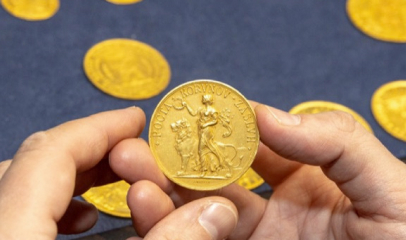
The position of the Schlick family deteriorated
After the death of Louis Jagllo and Stephen Schlick in the Battle of Mohács in August 1526,the position of the Schlick family deteriorated significantly vis-á-vis the royal power in Bohemia. In Stephen Schlick the entire Schlick family lost their most capable and most politically influential of the brothers, and, in addition, the young, brisk and determined ruler Ferdinand I. of Habsburg ascended to the throne. Although the Schlick family yielded an extraordinary income from mining activities and the operation of the Joachimsthaler mint, it was clear that their business has an unstable legal basis and in any time the monarch could ask for his share of the profit. After all, the Joachimsthal mint in the 1520s was one of the most profitable companies in medieval Europe of its kind and produced annually over a quarter million talers in talers and their fractions.
A new agreement with the king
The question of the legitimacy of the Schlick minting business was raised by Ferdinand I. at the Land Assembly, which took place in Prague from April to September 1528. Pushed into the defensive, the Schlicks concluded an agreement with the king in September 1528, according to which the control over the mint and the silver business was taken over by the king and, at the same time, the agreement guaranteed the Schlicks participation in this business and a certain share of profit. On September 28, 1528, the agreement was approved by the Bohemian Assembly. As early as September 30, 1528, on the command of Ferdinand I., a royal commission was sent to Joachimsthal with the task to investigate the current situation on site. Joachimsthal mintmaster Utz (Oldřich) Gebhart subsequently swore his allegiance to the king and on November 30, 1528, he was issued a Mintmaster’s credentials. At the same time, the supervision over the silver trade and the coin production went under the control of the Vienna Chamber of Commerce.
New dies as the demonstration of the new legal status
Sometime at the end of 1528, the mint began producing talers in an altered design, which clearly demonstrated the new legal status and authority of the king. On the obverse we can see the bust of the monarch, on the reverse a Czech-Hungarian coat of arms divided in four parts with a Habsburg shield on top, where the inscription refers exclusively to the royal majesty. In terms of art, they are very interesting and beautiful pieces in the style of the early Central European renaissance. Stylistically identical talers, undoubtedly from the dies of the same die-cutter, were minted at the Vienna mint at the same time. Later on, talers with the same design were minted also in in Linz, Upper Austria. It is obvious that the Vienna Chamber of Commerce organized the deliveries of the new dies to the Joachimsthal mint, recently taken over under the king’s administration. This institution was superior to the Joachimsthal mint in terms of administration of the royal property, and at the end of 1528 and at the beginning of the following year it actually took over the administration of the mint and full control of its operation. Securing new dies as the necessary precondition for the continuation of production and the demonstration of the new legal status in the operation of coin production in Joachimsthal, was an inevitable action by the royal Viennese officials. We can only speculate why the dies were not ordered from the existing supplier of the Joachimsthal mint. Perhaps fearing the deliveries would be delayed, perhaps due to secrecy or in an effort to strongly differentiate the new strikes from the Schlick ones. But perhaps also for a simple reason - because the supplier of the Vienna mint was simply the most available and sufficiently skilled. Probably for practical reasons the supply of Viennese dies was abandoned later on and the dies were ordered from local die-cutters, who could flexibly address the needs of the Joachimsthal mint.
Joachimsthal Taler 1529 MDXXVIIII
Sold in Auction # 26 for 60 000 eur.





















